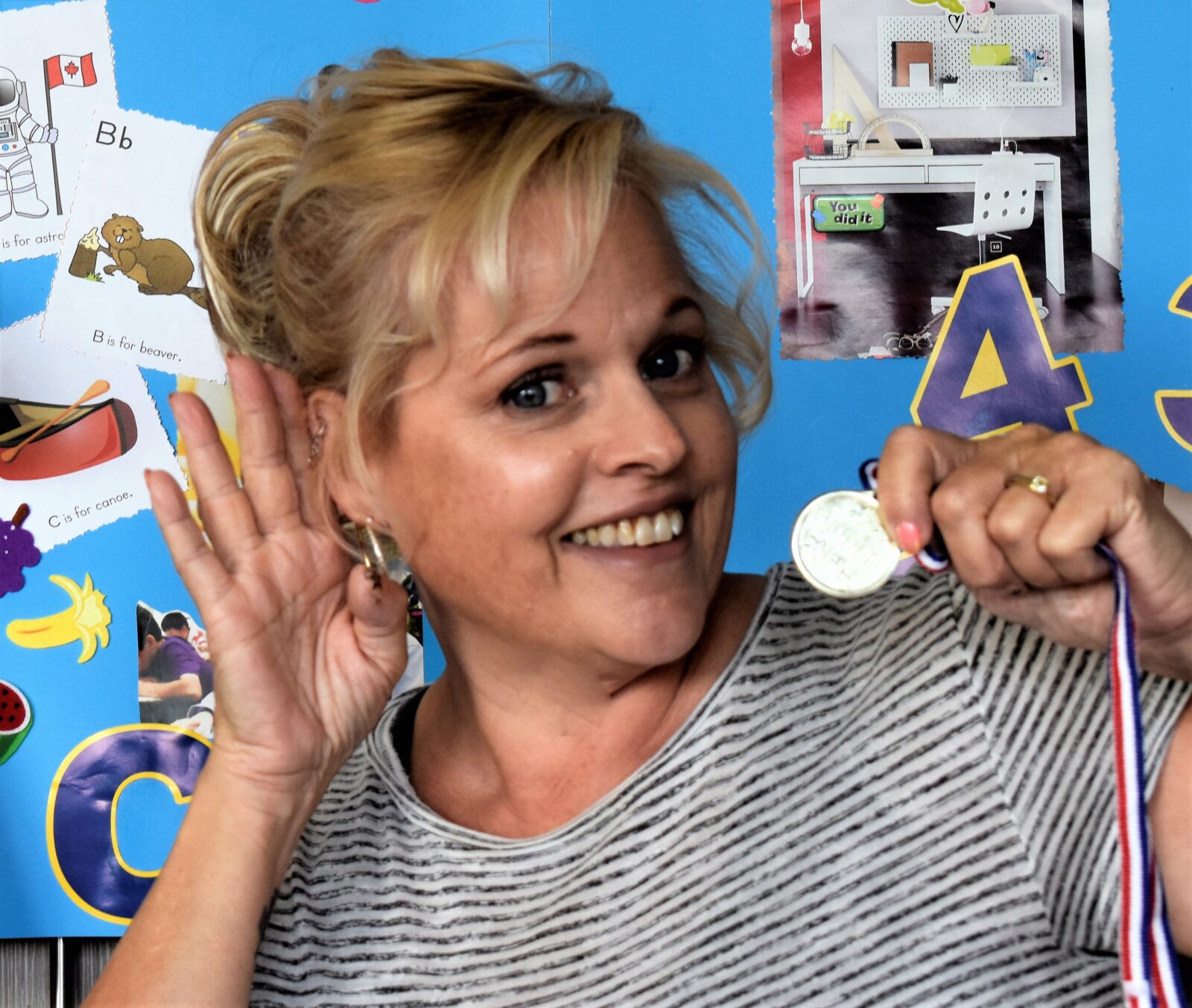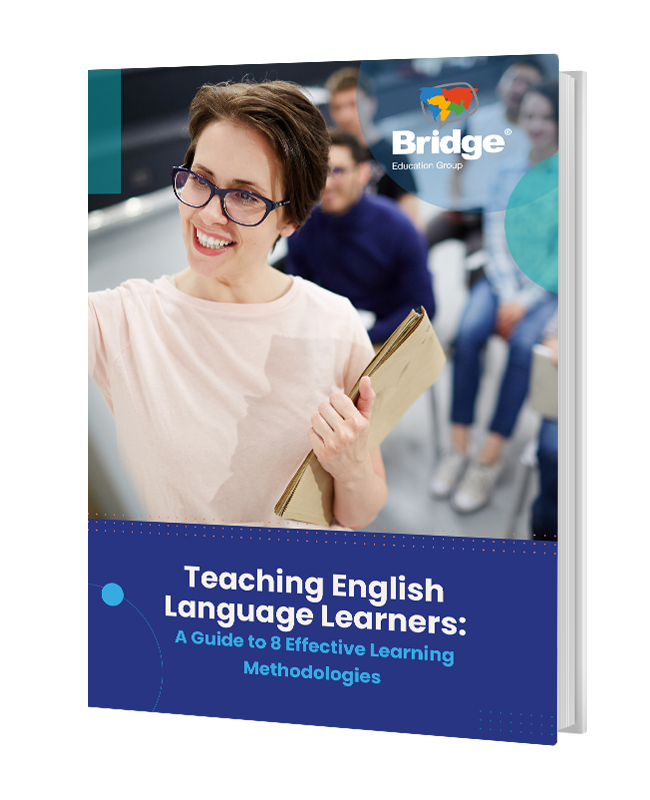There’s no single way to teach English and, in fact, there have been many popular approaches over the years. These are a few of the top ESL teaching methods, including communicative language teaching (CLT) and total physical response (TPR), used in the classroom today. Learn more about these and other methods and how you can apply them to a real-life classroom in Bridge’s Professional Certificate courses.
Whether you’re new to the different teaching methods or you need a refresher, download this guide to popular ESL methodologies to brush up on the definition and applications of the latest approaches developed by industry experts.
Why learn ESL teaching methods?
There are many reasons why learning a few basic ESL teaching methods is a must for ESL teachers. Here are some ways that learning the most popular methods of teaching ESL can help you as an English teacher:
- Demonstrating knowledge of these ESL teaching methods and strategies makes you more marketable.
- Using TEFL/TESOL buzzwords during an interview can improve your chances of getting hired.
- Using a variety of methods in the ESL classroom makes you a more effective and engaging teacher.
- Understanding pedagogy helps you design better ESL materials and lessons.
- Learning methodology can help you strategically use learning objectives that will benefit your students.
If you’re new to teaching, you’ll want to get initial training and qualification with a TEFL certificate. You can explore our online TEFL courses to get started!

What are some popular ESL teaching methods?
Method #1: Direct method
For the direct method, all teaching is done in the target language. Translations are not allowed in class, and the focus lies heavily on speaking instead of grammar. As a result, the direct method is a very student-centered strategy that has gained popularity in recent years.
Students are supposed to learn the target language naturally and instinctively, which is why the direct method is also called the “natural approach.” Mistakes are corrected as they happen in class, and teachers reinforce the correct usage of the language with praise. This method is frequently used when teaching English online. Many virtual ESL companies require teachers to only speak English during class to encourage an immersive experience.
Get more ideas for correcting students’ mistakes by taking Bridge’s 20-hour Micro-credential course: Error Correction in the EFL Classroom.
Begin your ELT journey or take the next step in your career with
Accredited Online TEFL/TESOL Certification
Explore CoursesMethod #2: Communicative language teaching (CLT)
Communicative language teaching is perhaps the most popular approach among the methods of teaching ESL today. CLT emphasizes the student’s ability to communicate in real-life contexts. As a result, students learn to make requests, accept offers, explain things, and express their feelings and preferences.
Additionally, since CLT focuses on teaching language through real-world assignments and problem-solving, it’s less concerned with grammar accuracy and instead focuses on fluency.
Promote communication and fluency in your classroom with these ESL speaking activities.

Method #3: Task-/project-/inquiry-based learning
This teaching strategy for ESL students can sometimes be considered a part of CLT, but it heavily emphasizes the students’ independence and individuality. Inquiry-based learning is a modern approach that is becoming widely popular in schools all over the world. By asking questions and solving problems, with the teacher as a mere learning facilitator, student motivation and participation in tasks and projects are thought to increase.
Find out more about task-based learning.

Method #4: Total physical response (TPR)
Next is the Total Physical Response (TPR) method. You may have heard of this teaching strategy for ESL before, but what exactly is TPR? Total Physical Response has become a very popular approach in which students react to the teacher with movement. Some examples include miming, gesturing, or acting out the language.
For example, the teacher and students might make an exaggerated frown and pretend to cry when learning the word “sad.” TPR suggests that students learn the target language best through physical response rather than by analysis.
Additionally, TPR is often used when teaching English online and when teaching young learners, as it not only helps students remember vocabulary but also provides an outlet for their energy and helps them stay focused when sitting for long periods.
If you like TPR, you might also like using drama as an ESL teaching method.
Learn about 8 ESL methodologies and get sample activities with the free guide to
Teaching English Learners: Popular ESL Learning Methodologies
downloadMethod #5: An eclectic approach
Many teachers choose from the collection of humanistic approaches (TPR, for example) and communicative approaches (the direct method and CLT). Often, they incorporate bits and pieces of many other teaching strategies for ESL learners and use what works best for their individual students. Generally speaking, there is no one-size-fits-all methodology. Each group of learners will have varying learning styles and preferences. For that reason, conducting a needs assessment is a great starting place for teachers who aren’t sure which methodology, or methodologies, to apply.
For example, a teacher who uses mostly the direct method may occasionally do a lot of grammar explanation when preparing students for English proficiency exams, such as teaching Pearson Test of English (PTE) test prep, or a CLT advocate may borrow some aspects of the direct method or use TPR.
- Pro Tip: Another great way to combine or develop teaching methods is to frequently reflect on your teaching style by using a journal where you write down comments, note adjustments, and brainstorm how you can change certain methods or procedures if necessary.
The list of ESL teaching styles doesn’t have to end here! You can find your own favorite TEFL/TESOL method from among those listed above, combine several strategies for teaching your ESL students, or develop your own ESL teaching methods and techniques. For a full breakdown of the different methodologies and how to evaluate your students’ needs, download Bridge’s ESL Methodologies Guide.










